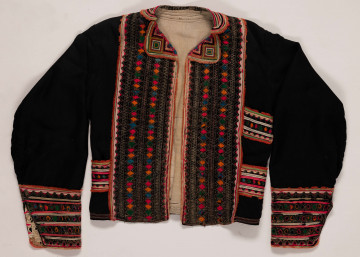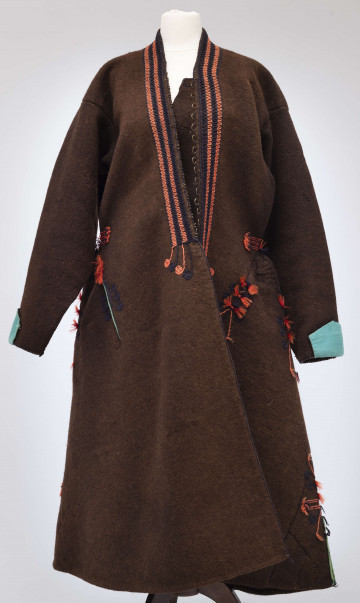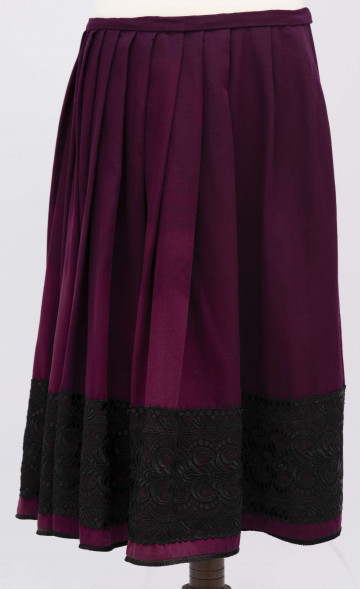
Men’s caftan
1890 — 1910
National Museum in Lublin
Part of the collection: Folk craft of the Lublin Region (19th/20th c.)
This type of shirt was worn with the Krzczonów region festive garment and comes from the village of Olszana from the beginning of the 20th century. It is sewn from self-made linen fabric and is cut to fit the frame (62 cm wide and 77 cm long). It is composed of four main rectangular elements: a front with a slit, a back and two sleeves, as well as seven smaller ones, i.e., two frames joining the front and back of the shirt in its upper part, two insoles, which are a kind of wedges sewn under the armpits of the sleeves, a collar with a button and two wide cuffs with a slit along the inside where there are five holes sewn on both sides, through which a ribbon was threaded for lacing. A festive shirt was distinguished from a casual one by the fabric, always the best the owner could afford, and by embroidery decorations. In the case of costumes from the Krzczonów region, embroidery was varied and placed on the collar, along the slit and on the cuffs, as was customary in other costumes from the Lublin region the lower edge and at the side slits of the shirt. The additional decoration on the lower part of the shirt confirms that shirts were worn over the trousers in that region, only belted with a decorative leather or – after World War I – velvet belt. The rich decorations on the shirt were made with cross-stitch, with coloured threads (red, yellow, white, black) arranged in geometric stripes and floral motifs. The embroidery in the parish of Krzczonów, where this dress was worn, was not adopted until the early 20th century. According to Janusz Świeży, it was introduced by the wife of one of the farmers of Russian origin. This shirt was also additionally stitched with a decorative stitch, called ‘obrzucka’, which connected the hem with the front and back of the shirt and the sleeves. Such a procedure was used to strengthen the joining of two fabrics. In ethnography it is believed that embroidery in folk culture developed from this form.
Author / creator
Dimensions
cały obiekt: height: 62 cm, width: 77 cm
Object type
shirt
Technique
cross hatch
Material
canvas, cotton thread
Creation time / dating
Creation / finding place
Owner
The National Museum in Lublin
Identification number
Location / status

1890 — 1910
National Museum in Lublin

1901 — 1920
National Museum in Lublin

1910
National Museum in Lublin
DISCOVER this TOPIC
National Museum in Lublin
DISCOVER this PATH
Educational path